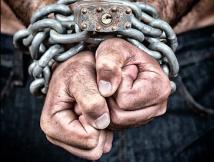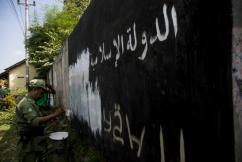
compiled by Mahasin D. Shamsid-Deen
Ten years ago, then President Barack Obama issued a presidential proclamation declaring January as National Slavery and Human Trafficking Prevention Month. In 2022, the tenth anniversary of this initiative was continued by President Biden who released an updated “National Action Plan to Combat Human Trafficking” document which lists approaches to combating human trafficking in the United States and abroad. Although trafficking is a serious global problem, many Americans seldom think about it or realize how significant the problem is.
Relationship between Human Trafficking & Slavery
- Human trafficking is a modern form of slavery. It is an extreme form of labor exploitation where women, men, and children are recruited or obtained by means of coercion, kidnapping, blackmail or deception. Once in the traffickers’ grips, the victims are then forced to do different types of labor against their will by means of force, fraud or coercion. Trafficking victims are often lured by false promises of decent jobs and better lives. Most human trafficking involves sexual exploitation or labor services.
Statistics
According to a September 2017 report from the International Labor Organization (ILO) and Walk Free Foundation:
- An estimated 24.9 million victims are trapped in modern-day slavery.
- 16 million (64%) were exploited for labor
- 4.8 million (19%) were sexually exploited
- 4.1 million (17%) were exploited in state-imposed forced labor
- 7.5 million (47%) forced labor victims work in construction, manufacturing, mining, or hospitality
- 3.8 million (24%) forced labor victims are domestic workers
- 1.7 million (11%) forced labor victims work in agriculture
- 71% of trafficking victims around the world are women and girls and 29% are men and boys.
- 15.4 million victims (75%) are aged 18 or older
- 5.5 million (25%) are children under the age of 18
- The Asia-pacific region accounts for 15.4 million (62% of the global total). A
- Africa - 5.7 million (23%)
- Europe and Central Asia - 2.2 million (9%).
- The Americas account for 1.2 million (5%)
- Arab States account for 1% of all victims.
- Human trafficking does not always involve travel to the destination of exploitation: 2.2 million (14%) of victims of forced labor moved either internally or internationally, while 3.5 million (74%) of victims of sexual exploitation were living outside their country of residence.
Recruitment
In 2020
- There was a 125% increase in reports of recruitment on Facebook over the previous year and a 95% increase on Instagram.
- Online recruitment overall increased a significant 22%. During the lockdowns, as the proportion of victims from common recruitment sites such as strip clubs (-46%), foster homes (-70%), and schools (-38%) went down drastically, the internet was reported as the top recruitment location for all forms of trafficking.
- 42% of victims were brought into trafficking by a member of their own families.
- 39% were recruited via an intimate partner or a marriage proposition.
- Interaction with friends and family has been the top reported access point from 2018 – 2020.
- In 2020, friends and family were the access point for help for 40% of identified victims (4,098).
- In labor trafficking situations, by contrast, of the 1,572 victims whose recruitment was known:
- 69% were recruited by a potential or current employer
- 15% were recruited into trafficking by a member of their own family
- 5% by an intimate partner or marriage proposition
Victims
- Human trafficking can happen to anyone but some people are more vulnerable than others. Some of the risk factors that characterize many victims include immigration status, economic insolvency, mental health, substance use, homelessness, being a runaway or a youth neglected in the child welfare system.
Perpetrators
- Perpetrators involve themselves for a number of reasons but they could be practically anyone of ill intent including business owners, members of a gang, cartel or network, parents or family members of victims, intimate partners, owners of farms or restaurants, powerful corporate executives and even corrupt government representatives.
Tactics H2
- Traffickers use a wealth of tactics to compromise and control their victims. Harsher practices may involve physical or emotional abuse, threats, economic intimidation, kidnapping and/or isolation from family and friends. Traffickers abuse the trust of victims and their families by making promises that address the needs of their victim or imply that the interaction is safe and will provide some sort of relief of hardship. Nothing can be further from the truth. As a result, victims often experience psychological trauma, shame and fear. Blackmail and threats of violence to the victim or their family are other tactics that are very effective in the perpetrator maintaining control.
Social Media Conspiracies
- Although social media is a very modern method of spreading information and raising awareness, victims are often negatively impacted by social media conspiracy theories about slavery and human trafficking. Well-meaning citizens who read stories on social media often feel compelled to report and pass along the information. However, unsubstantiated or conspiracy-related reports from people with no direct knowledge or involvement of the trafficking situation can overwhelm services meant for victims. As agencies respond to these supports, it takes away from legitimate investigations. In addition, these incidents tend to distort the trafficking reality. In truth, most slavery and trafficking is being done in the open, often by people no one would ever expect. Entertainment media portrays cartels and obvious villains, whereas the reality is that trafficking is done by citizens of all walks of life and most often by people that the victim knows!
Action plans
- Educate yourself on the problem by reviewing the U.S. State Department Office to Monitor and Combat Trafficking In Persons.
- If you are in the United States and believe someone may be a victim of human trafficking, call the 24-hour National Human Trafficking Hotline at 1-888-373-7888 or report an emergency to law enforcement by calling 911.
- Understand that the Federal Bureau of Investigation (FBI) is responsible for investigating human trafficking and supporting the victims of this crime. That work is carried out by the Civil Rights Unit, the Violent Crimes Against Children Program, and the Office for Victim Assistance .
- Review initiatives that work towards or educate the public on the issue like CNN’s Freedom Project, the “Free the Slaves” organization, and a host of NGOs that can be found by searching the internet.






Add new comment